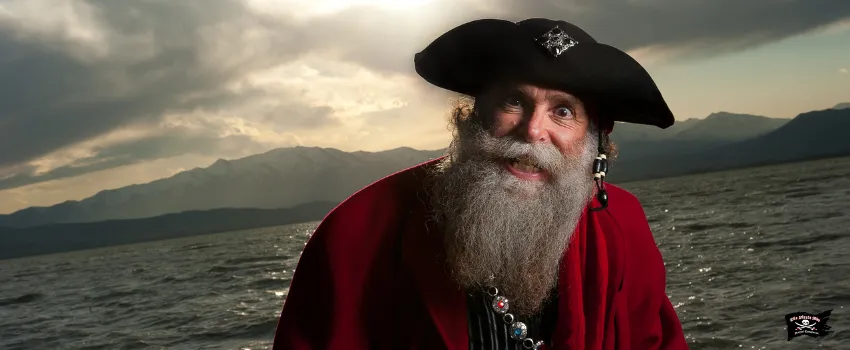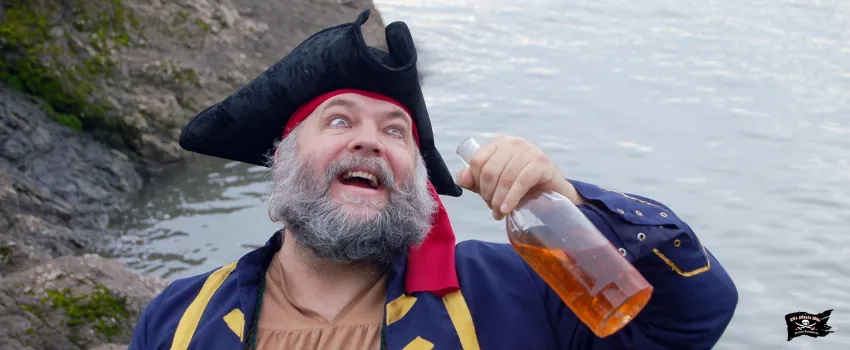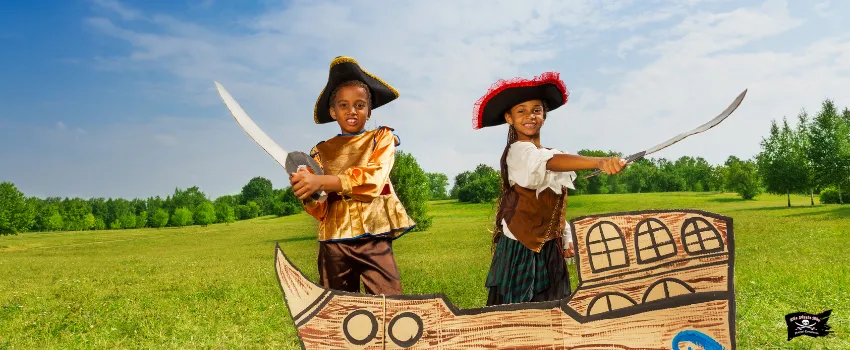Pirate sea shanty songs are sung not only by sailors and their fellow seamen, but by the world at large. How many sea shanties do you know off the top of your head?
Popular pirate songs have saturated the modern world. However, between the 16th and 19th centuries, the sea shanty was used as a means to communicate important information. In addition, it was a way to pass time during the working day. As catchy as they are practical, the sea shanty song is an important piece of pirate lore.
What is a sea shanty, anyway?
Long before the advent of the iPod or Spotify, sailors sought ways in which to entertain themselves. Though a pirate’s reputation often precedes them in drinking and revelry, singing and dancing come a close second as forms of entertainment.
On board a pirate ship, however, entertainment took a backseat to efficiency. There are many things to do on a ship, and rhythm can mean the difference between success and failure. Thus, pirate sea shanty songs were born.
A sea shanty song is often lead by what is known as a “shantyman.” The shantyman would sing the first verse and the rest of the sailors would fill in as the chorus. The sea shanty utilizes a “call and response” format for song structure. This call and response format helped sailors keep in rhythm with each other, when coordination is key.
The lyrics of sea shanties often reflected the hardships, longings, and experiences of life at sea. A pirate song often covered a range of topics, including sailing, love, longing for home, sea battles, drinking, and various aspects of maritime life.
How Sea Shanties Helped Sailors and Pirates
Pirate shanty songs, aside from being a popular way to pass the time, served a practical purpose as well. Instead of smartphones, sailors relied on sea shanties to coordinate with each other. They even used these songs to synchronize their actions, whether positioned on opposite sides of a mast or at opposite ends of the ship.
Sea shanty pirate songs served several purposes. They helped to maintain a steady rhythm for repetitive tasks such as hauling on ropes, raising and lowering sails, or turning capstans. The songs also provided a sense of camaraderie and boosted morale among the sailors during long and difficult voyages.
Additionally, sea shanties played a role in preserving maritime traditions and passing on the cultural heritage of seafaring communities. These songs were often passed down orally from one generation of sailors to the next, creating a sense of connection with the past.
The Most Popular Sea Shanties
Some pirate sea shanty songs that were popular during the Golden Age of Piracy remain popular to this day. For instance, what would you do with a drunken sailor? Not just a question, but a lyric from one of the most enduring sea shanty pirate songs of all time.
“Drunken Sailor” is perhaps one of the most widely recognized sea shanties. It involves a repetitive call-and-response structure and tells the story of a sailor who is punished for being drunk on duty. Perhaps this pirate song was popular for a reason, lending to a pirate’s knack for getting and staying drunk.
“Blow the Man Down” is another popular shanty that tells the story of a sailor who gets into a fight and is ultimately arrested. It has been widely recorded and performed in various musical styles. Though there is no definitive rendition of the song, a modern iteration recently gave credence to it’s era-spanning popularity.
The Longest Johns, an English a capella group, gained significant recognition for their performance of sea shanties, including “Blow the Man Down.” Their version of the song went viral on platforms like TikTok and YouTube, contributing to the resurgence of interest in sea shanties.
Some pirate shanty songs are decidedly more somber than others. “Leave Her, Johnny” is sung when a sailor’s voyage is ending, bidding farewell to the ship. It reflects the mixed emotions of leaving the vessel and returning home.
Sea Shanties and the Modern Sailor
Long gone are the days of the long haul sea voyages sans internet, thus, the sea shanty has lost its significance. That isn’t to say that the sea shanty isn’t still a popular means by which to pass the time, however.
Today, sea shanties are no longer a necessity for maritime work. Fortunately, they continue to be sung and appreciated for their historical significance, musicality, and storytelling. They have become a part of cultural events, festivals, and gatherings, allowing people to connect with the seafaring traditions of the past.
As an example, modern musicians, such as The Long Johns, carry on the tradition by recording modern iterations of pirate shanty songs.
Known as the “Last Working Shantyman,” Stan Hugill was an English sailor and musician who extensively researched and recorded sea shanties. His knowledge and performances of shanties helped preserve the tradition and made him a prominent figure in the world of maritime music.
English folk musician Sam Lee is an encyclopedia of folk music, including sea shanties. Meanwhile, Irish folk band The Dubliners have added a few sea shanties to their extended catalog.
Carrying on a Pirate Tradition
Though the Golden Age of Piracy is over, pirates in modern popular culture remain trendy and fashionable. Pirates and their songs remain ingrained in our collective psyche, be it through Halloween costumes or blockbuster films.
Make lasting memories at sea with Sunshine Scenic Tours.
Although you may not sail with the likes of Captain Kidd, sailing alongside the Royal Conquest, the best pirate cruise in John’s Pass awaits. Sing sea shanties and set your sights on the horizon as you embark on an exhilarating maritime journey. Book your voyage today and let your pirate spirit come alive!











